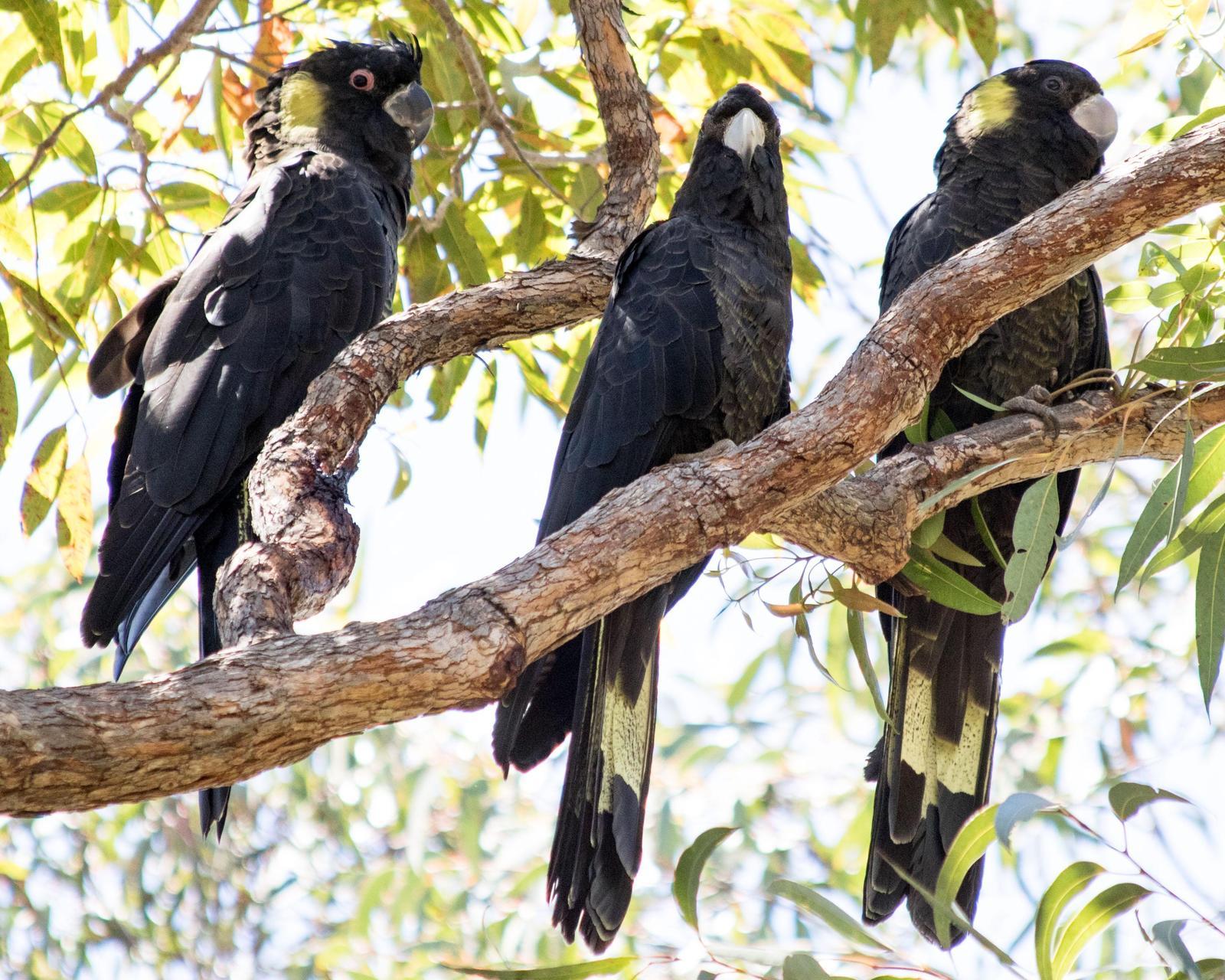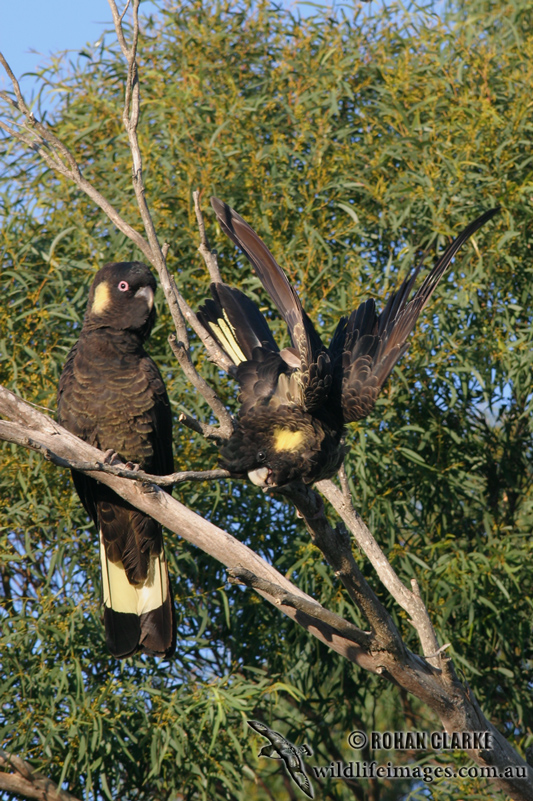

Distribution and Taxonomy of Birds of the World. Australian Journal of Zoology 32: 363–377 Sibley, C.G. Both species are otherwise similar in appearance with white patches on. Biochemical systematics of the Australian cockatoos (Psittaciformes: Cacatuinae). Baudins and Carnabys black cockatoos can be identified by their upper bill mandibles. The tail panels on adult males tend to be solid red (no black. Adult females have irregular yellow patches on the head, and the tail panels tend to be redder with orange/yellow and black bars but may become less barred and redder with age.

Adams, M., Baverstock, P.R., Saunders, D.A., Schodde, R. It has a brown-black head, red or red with orange/yellow tail panels, and an otherwise dull black body. Eine systematische Liste mit Verbreitungsangaben sowie deutschen und englischen Namen. Melbourne : Royal Australasian Ornithologists Union xx 311 pp. Checklist of the Birds of Australia Pt 1 Non-passerines. Cambridge : Harvard University Press Vol. Catalogue of the Birds in the British Museum. London : Witherby xxvii 453 pp., and by specific separation of yellow-tailed eastern populations from white-tailed WA forms after Salvadori, T. A List of the Birds of Australia containing the names and synonyms connected with each genus, species, and subspecies of birds found in Australia, at present known to the author. Emu 79: 215–227, modified here by subspecific separation of smaller W VIC-SA populations from those in TAS after Mathews, G.M. Distribution and taxonomy of the white-tailed and yellow-tailed black-cockatoos Calyptorhynchus spp. The female is duller black, with yellow speckles on the head and breast, and yellow patches in her tail. Female cinnamon cockatiels retain their dull orange cheek patches. The male cinnamon cockatiel develops a bright yellow face (also known as the mask) and bright orange cheek patches after his first molt.

Unlike other cockatoos, a large proportion of their die. 37.2, xiii 440, CSIRO Publishing, Australia, Melbourne p85 (based on Saunders, D.A. The Yellow-tailed Black Cockatoo, Calyptorhynchus funereus, is a large cockatoo native to the south-east of Australia and Tasmania. The cinnamon cockatiel mutation gets its name from the cinnamon color, which is basically a brownish-grey color. Yellow-tailed Black cockatoos are big Australian forest birds up to 65cm, more than two foot, long. Most often observed flying above woodland or feeding in trees. (eds), Zoological Catalogue of Australia, vol. Surprise me Enormous black cockatoo with yellow cheek patches and tail panels. 1997, "Aves (Columbidae to Coraciidae)", Ed. They were such an enjoyable interlude to the morning.If you have images for this taxon that you would like to share with As I approached they flew further west down the northern side of the summit ridge. After about five minutes the birds flew off to the west, where some of them were again in low trees on the southern side of the water tank on the saddle. I am not sure if the aggressor bird was the same on both occasions or if these were the two birds which had been squabbling on the ground. On a couple of occasions another bird came from above in an apparent effort to dislodge the bird. It would occasionally call out or its beak would make a loud sound as it was dragged across the wood. It features black feathers contrasting with a distinctive yellow spot on the cheek and bright yellow under-feathers on a long tail. After a little while the birds flew to a nearby tree where one bird took control of a shallow hollow. The bird, with a yellow goo covering its tongue, was holding the food like a banana but the substance would have been too small to be that fruit. One of the birds was eating something with a yellow flesh. The white patches appeared to have the shafts of the feathers obviously crossing them. One of the birds appeared to have white patches near the yellow on the cheeks. It climbed up one small sampling, attacking the wood at the start of its journey. That bird was enjoying stripping bark from the tree. At least two birds sounded like they were squabbling on the ground, with another bird, second photograph below, often making a call in response to their squabbling. I do not know if they were young birds but I did not see any interaction with them from the other birds. Typically feeds on seeds and insect larvae, but also known to frequently consume pine cones from introduced tree species. There were two birds on the ground making a constant rasping, pleading sound. Surprise me Enormous black cockatoo with yellow cheek patches and tail panels. I counted six birds, with most starting on the ground. After walking on further, I saw a black bird on the ground on the southern slope just below the summit, thinking it was a raven until I again heard the unmistakeable call of this delightful bird. I heard the call of the Yellow-tailed Black Cockatoos ( Calyptorhynchus funereus) but I was not sure where they were.


 0 kommentar(er)
0 kommentar(er)
